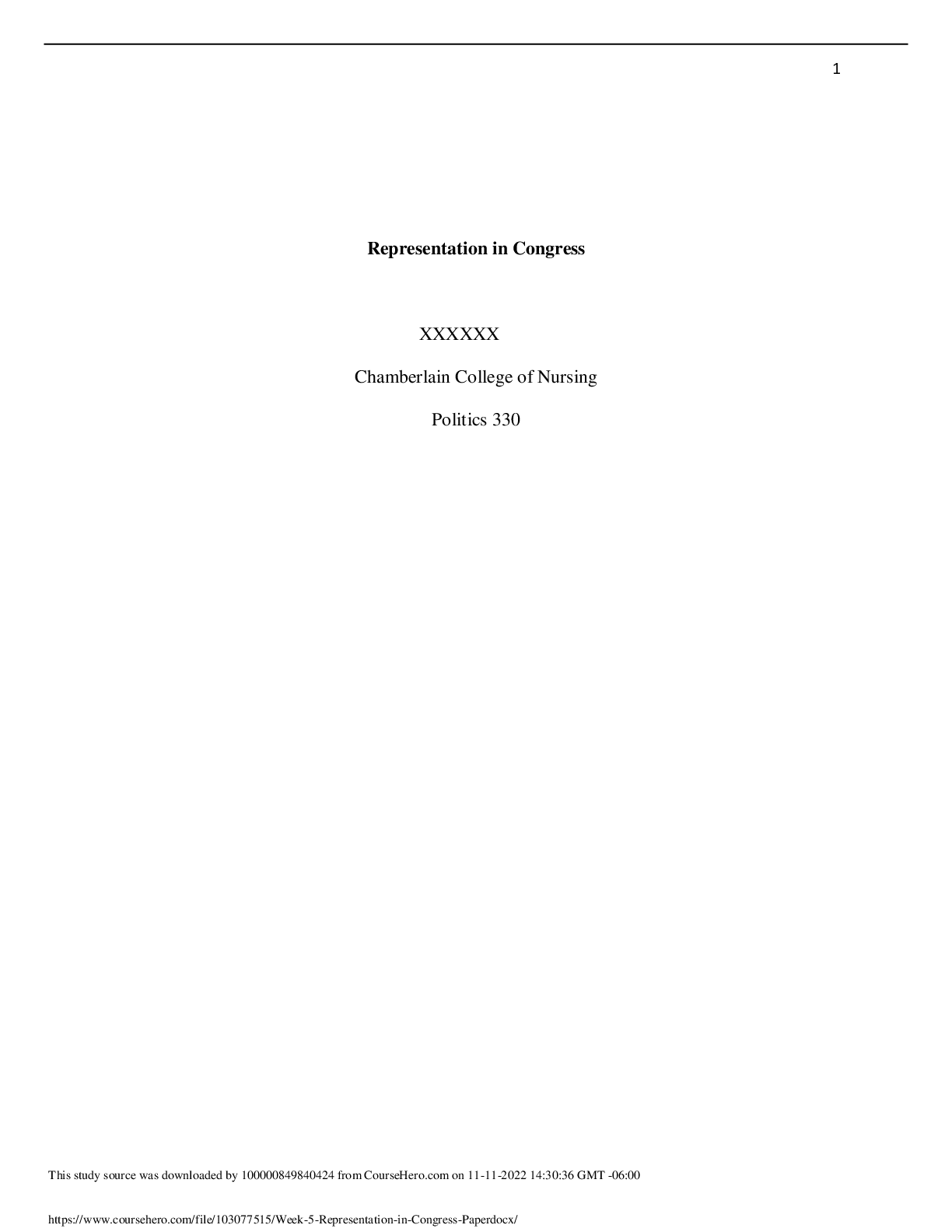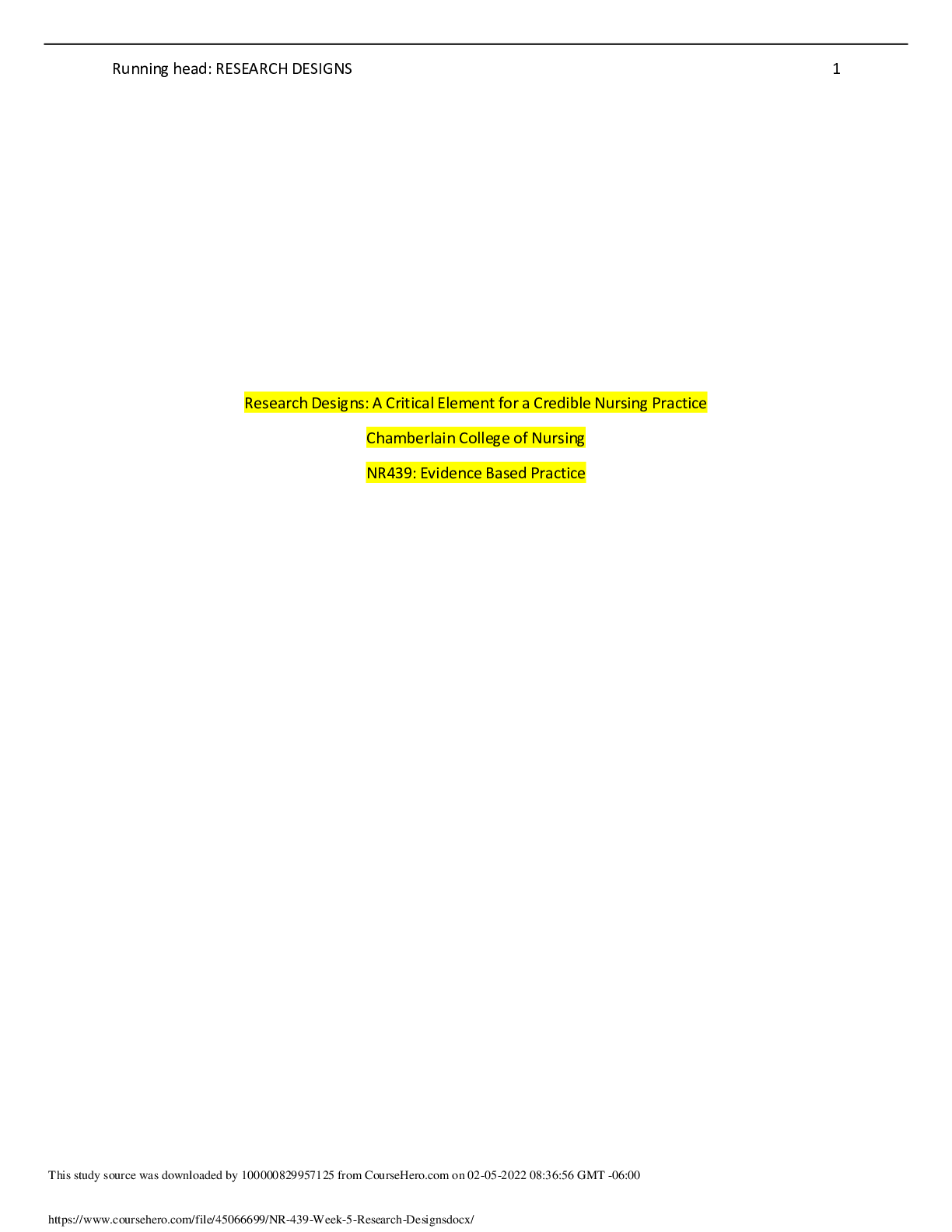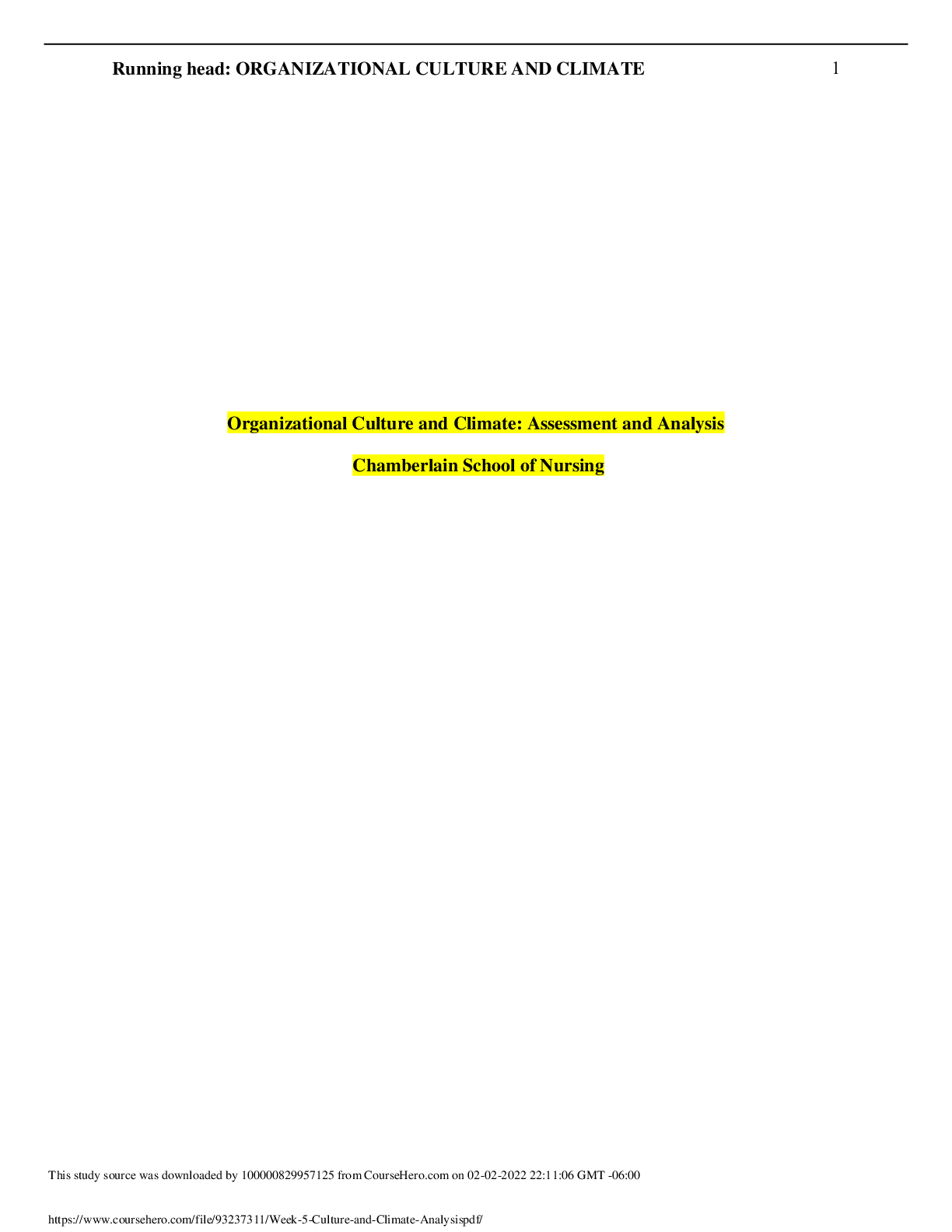*NURSING > CASE STUDY > NR 293 Week 5 Assignment: ATI: Pharmacology Made Easy: Cardiovascular System AIA (All)
NR 293 Week 5 Assignment: ATI: Pharmacology Made Easy: Cardiovascular System AIA
Document Content and Description Below
ATI: Pharmacology Made Easy: Cardiovascular System Chamberlain College of Nursing NR293: Pharmacology Analysis of Relationship The antihypertensive drug chosen for ... the medication active learning assignment was amlodipine, which is used to treat high blood pressure. It works by inhibiting the transport of calcium into myocardial and vascular smooth muscle cells, then resulting in the inhibition of excitation-contraction coupling and subsequent contraction. Clients need to be educated on how to take this drug. It is important to advise clients to take the medication as directed and notify health care provider of all Rx and OTC medications taken by the client in order to prevent drug- drug interactions. Instruct patients on importance of oral hygiene and proper technique for monitoring pulse. Also, advise client to change position slowly in order to minimize orthostatic hypotension. Notify health care provider if symptoms do not improve and chest pain persist. In order to evaluate the effectiveness of amlodipine client must report decreased BP, decreased frequency and severity of angina attacks, decreased need for nitrate therapy, and increased activity tolerance and sense of well-being (Quiring et. al, 2019). Amlodipine is used to treat hypertension, which is the system disorder chosen for the system disorder assignment. Hypertension is categorized as a systolic pressure greater than 150 mmHg or diastolic pressure greater than 90 mmHg. Risk factors include age, genetics, family history, obesity, smoking, heavy alcohol consumption, low activity level, diabetes, high sodium intake, and gender; men have a higher risk. Expected findings include headache, blurry vision, atherosclerosis, papilledema, increased systolic and diastolic pressure, and loss of vision, sensation, hearing, and taste. Laboratory tests include renal function, urinalysis, serum potassium level, BUN, creatinine, uric acid, magnesium, and liver enzyme test (Mayo, Clinic, 2021). It is important to educate client on a heart healthy diet, weight loss if overweight, stress reduction techniques, exercise, and restricted alcohol and cigarette use. Reference Quiring, C., Vallerand, A. H., & Sanoski, C. A. (2019). Davis's Drug Guide for Nurses (16th ed., Vol. 1). Philadelphia, PA: EA Davis Company. Mayo Clinic. (2021). High blood pressure (hypertension). Retrieved on February 2, 2021 from https://www.mayoclinic.org/diseases-conditions/high-blood-pressure/symptoms- causes/syc-20373410 [Show More]
Last updated: 1 year ago
Preview 1 out of 5 pages
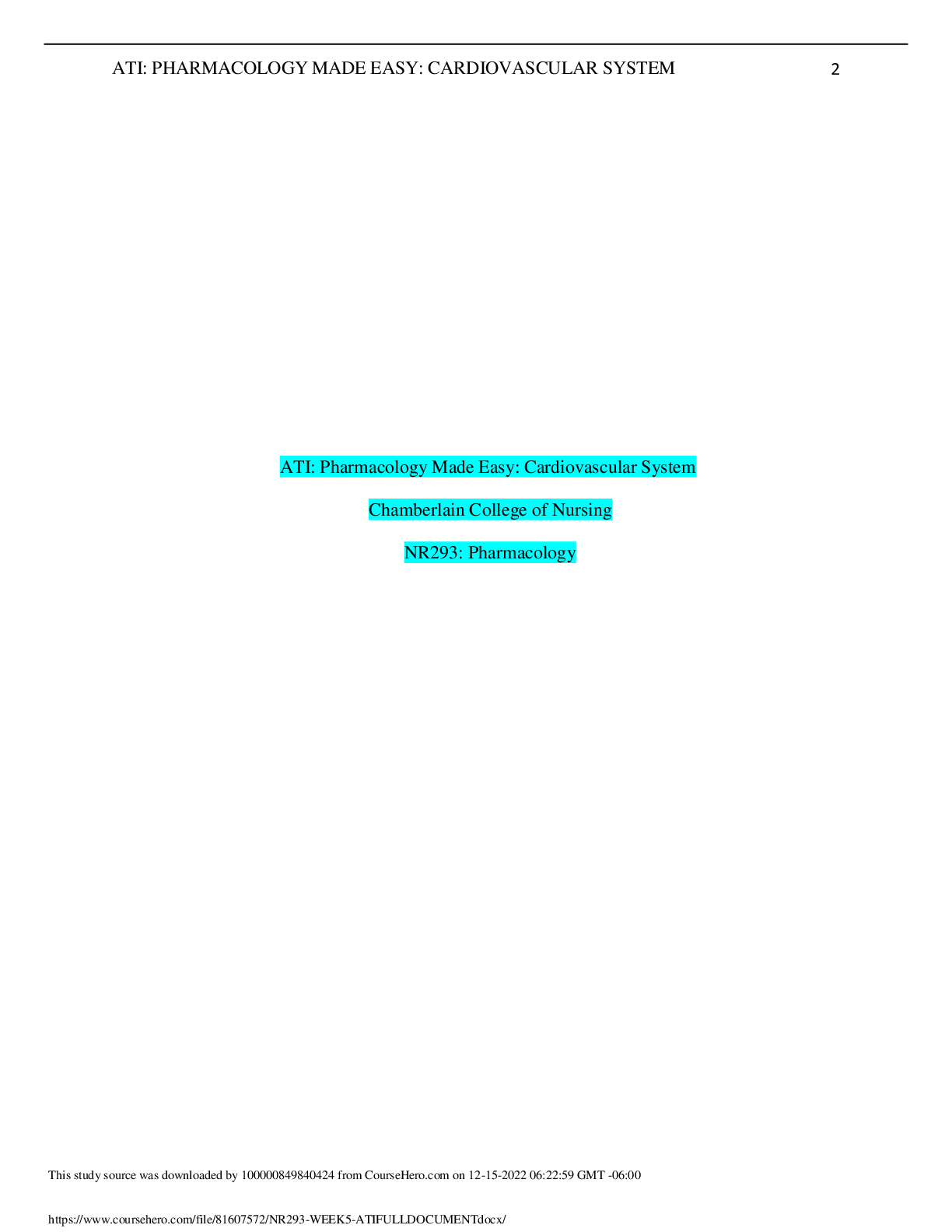
Reviews( 0 )
Document information
Connected school, study & course
About the document
Uploaded On
Jun 27, 2022
Number of pages
5
Written in
Additional information
This document has been written for:
Uploaded
Jun 27, 2022
Downloads
0
Views
46
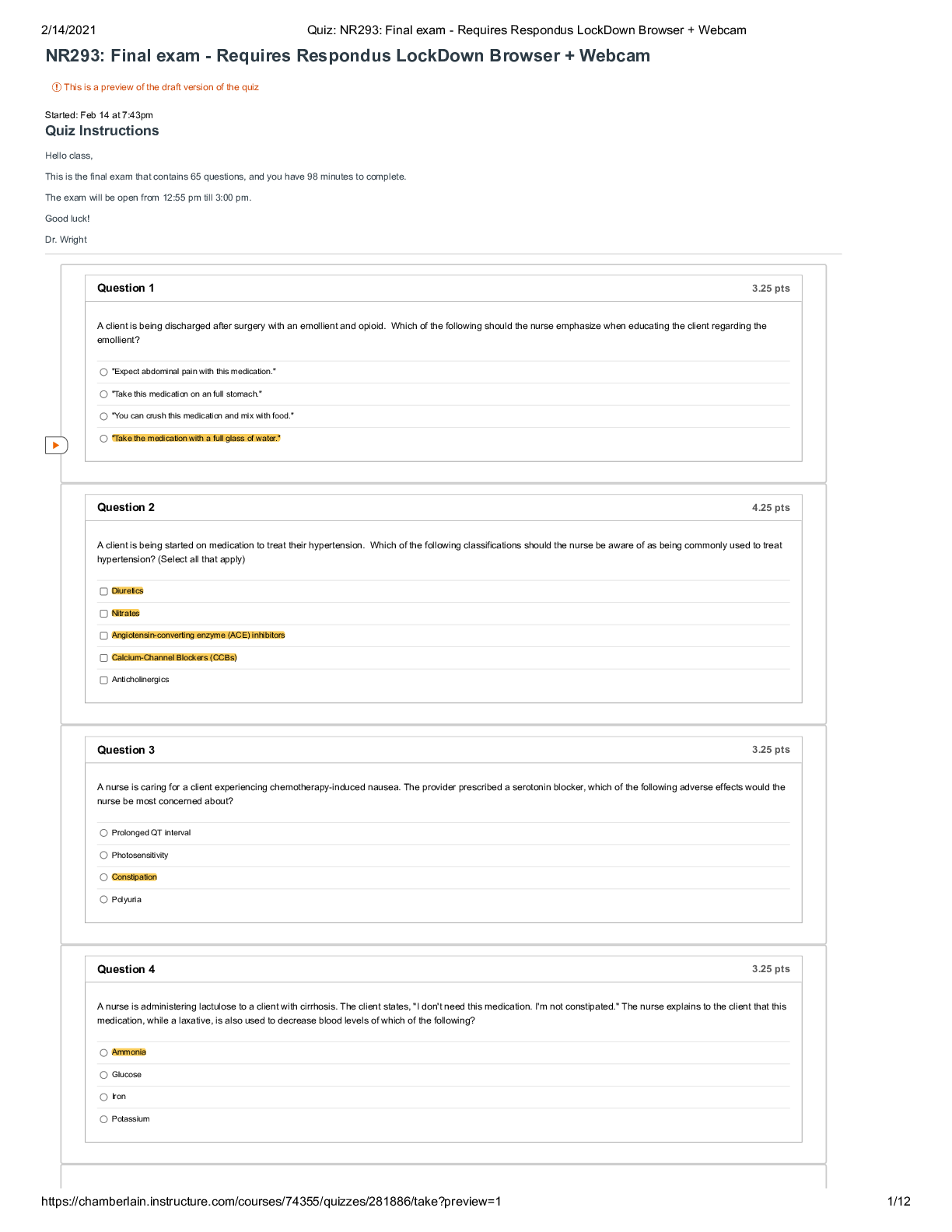



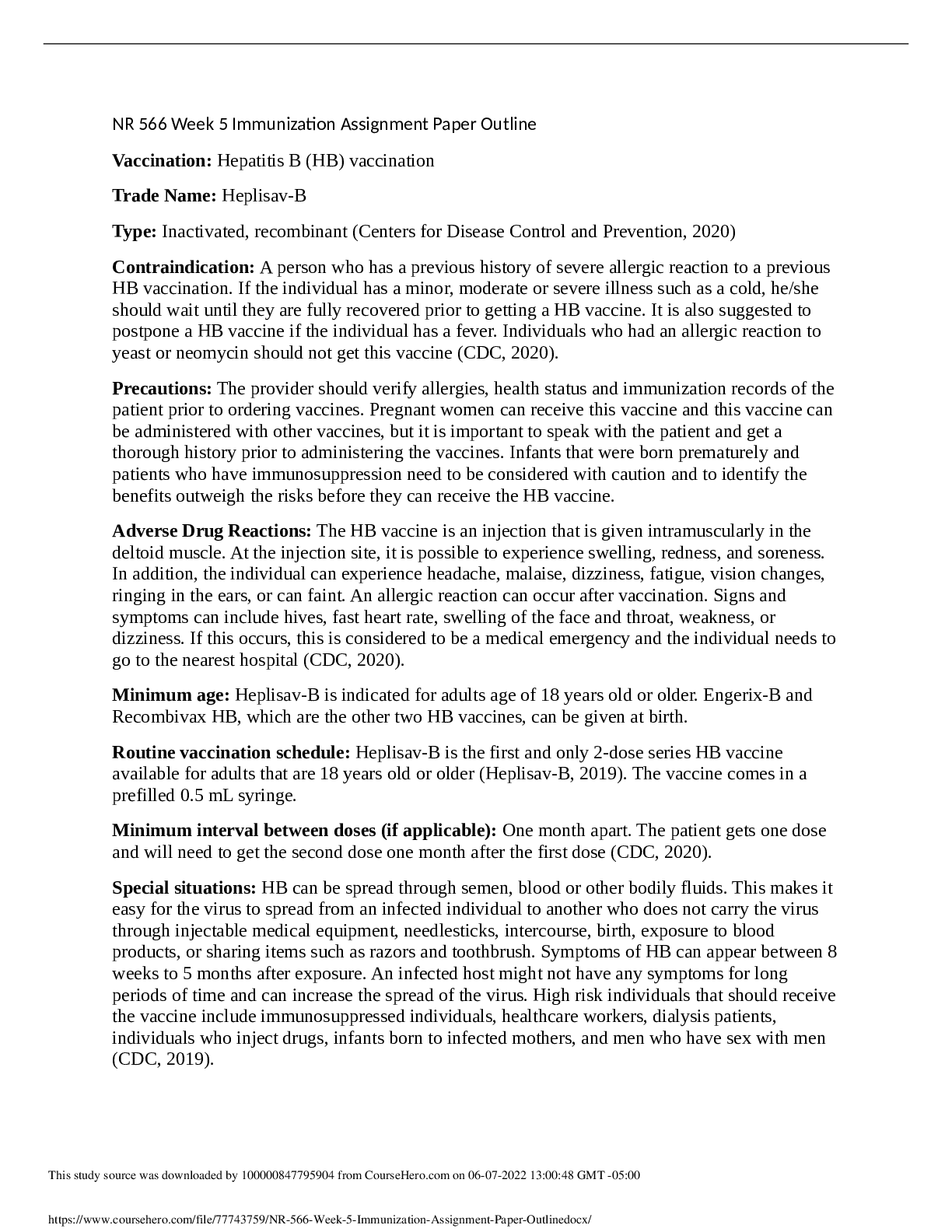
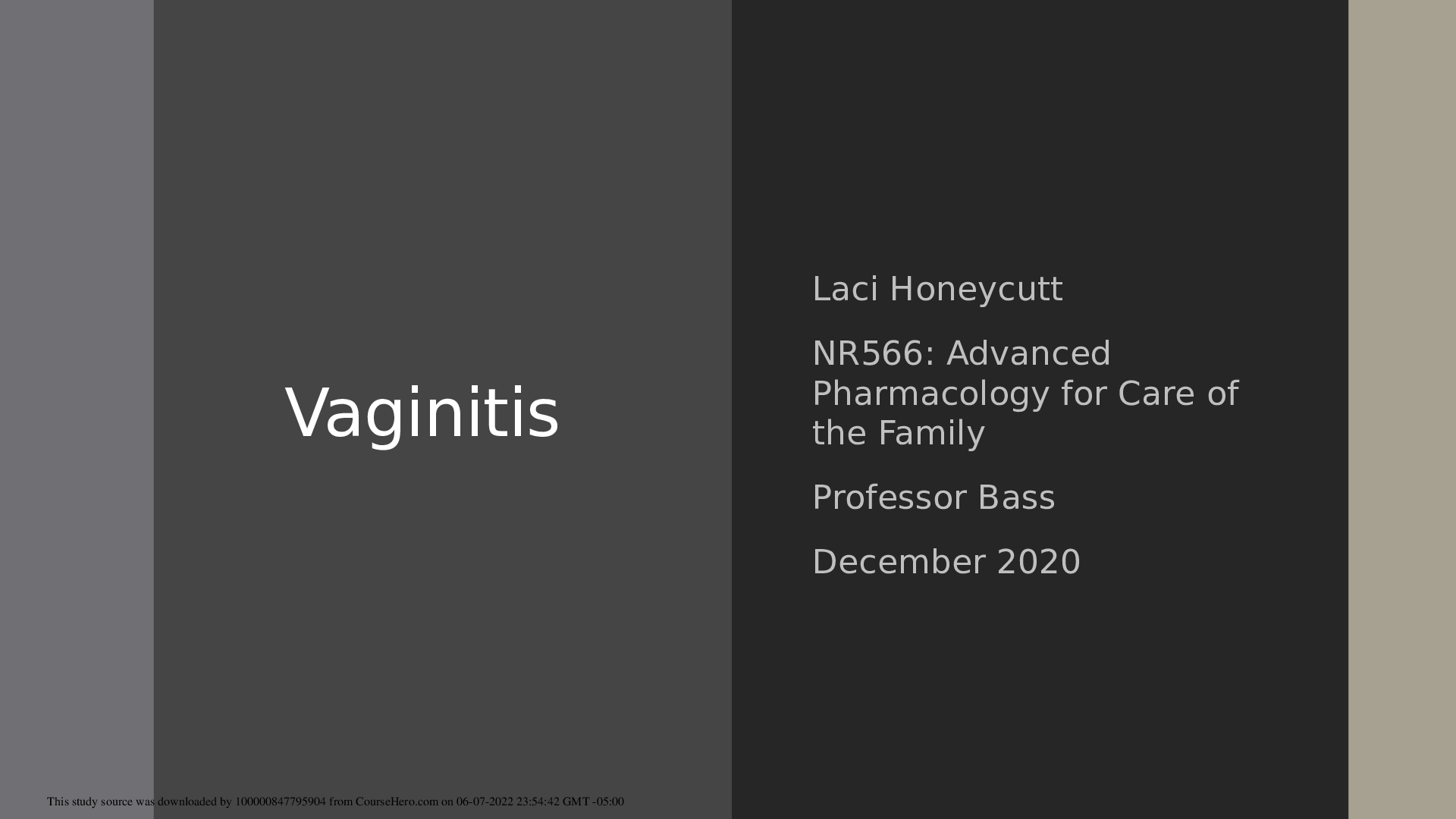
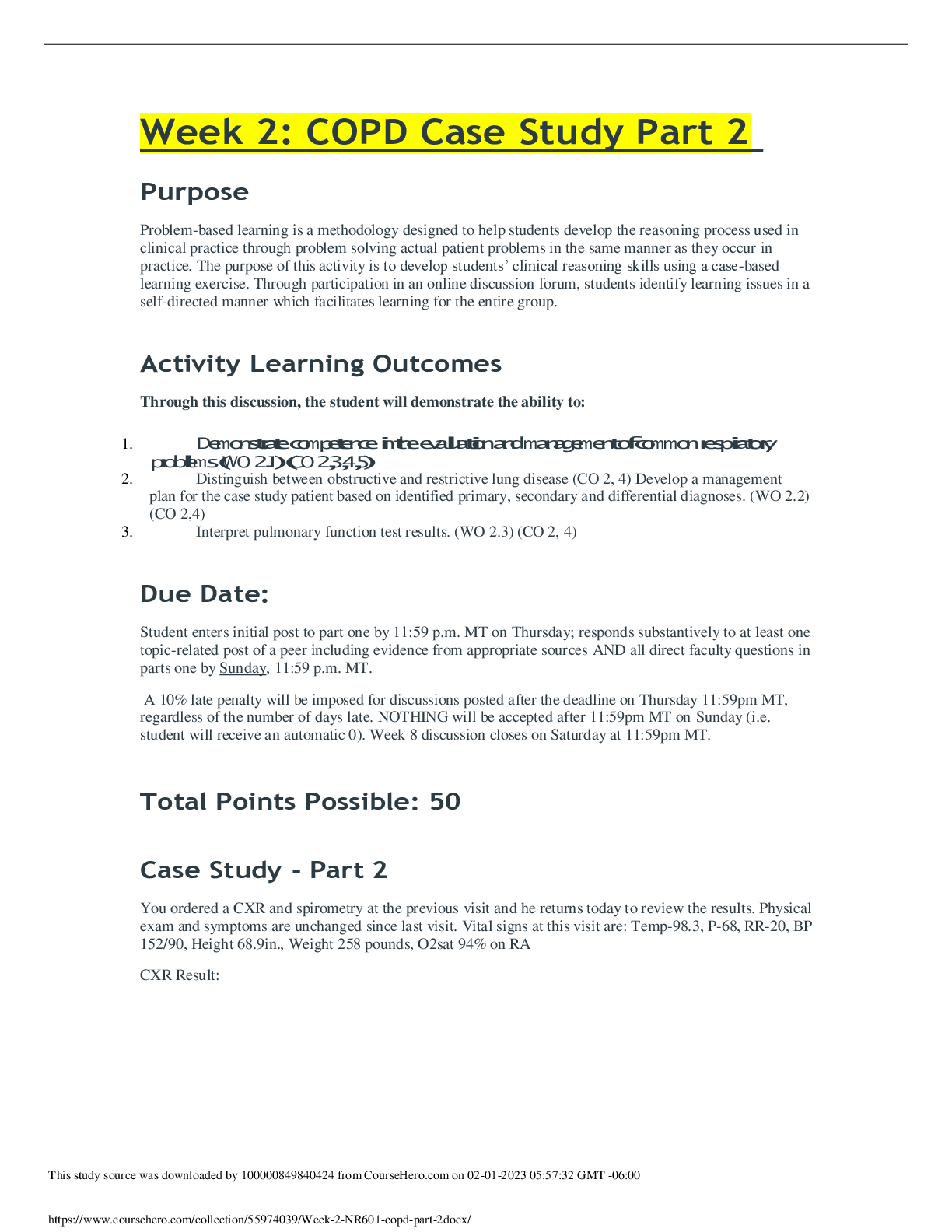
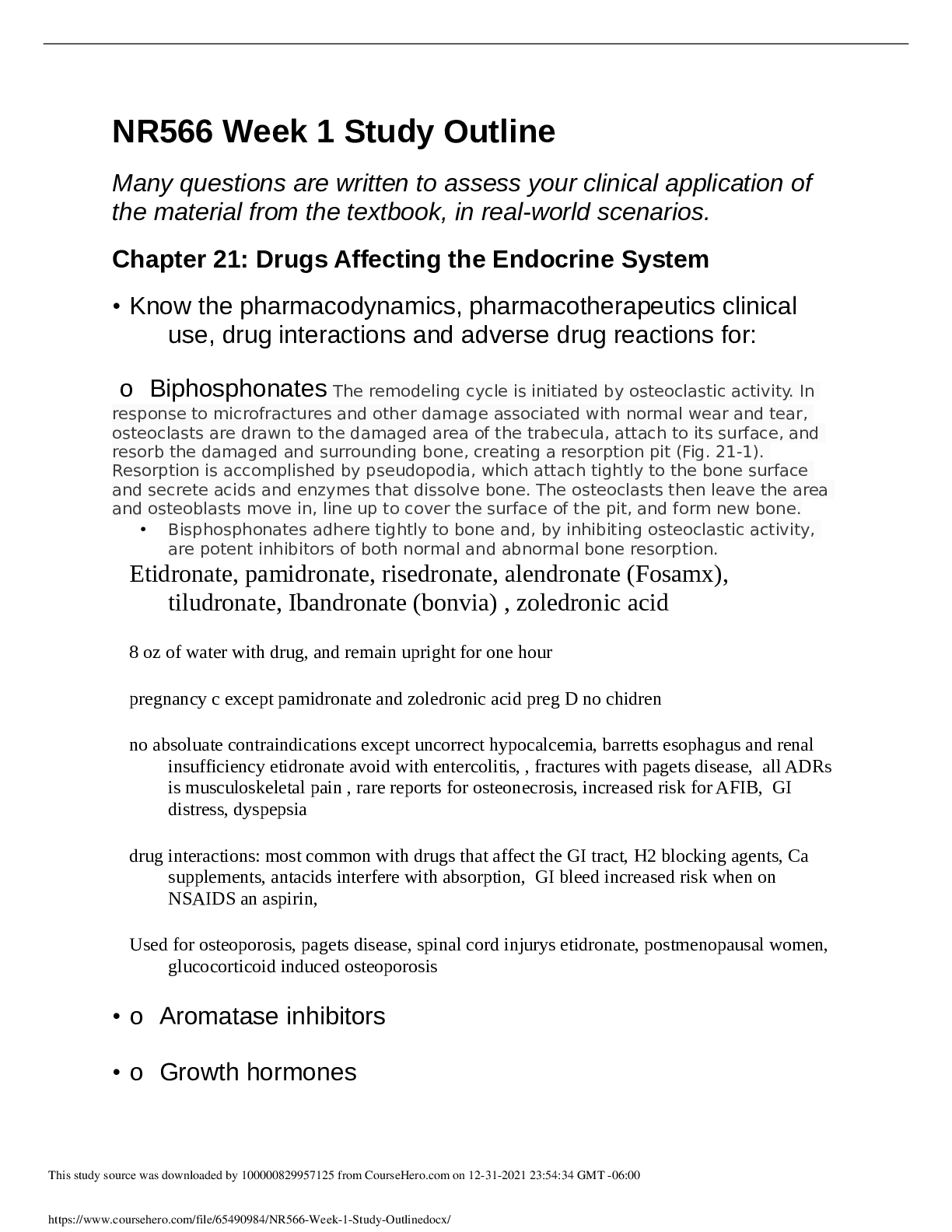
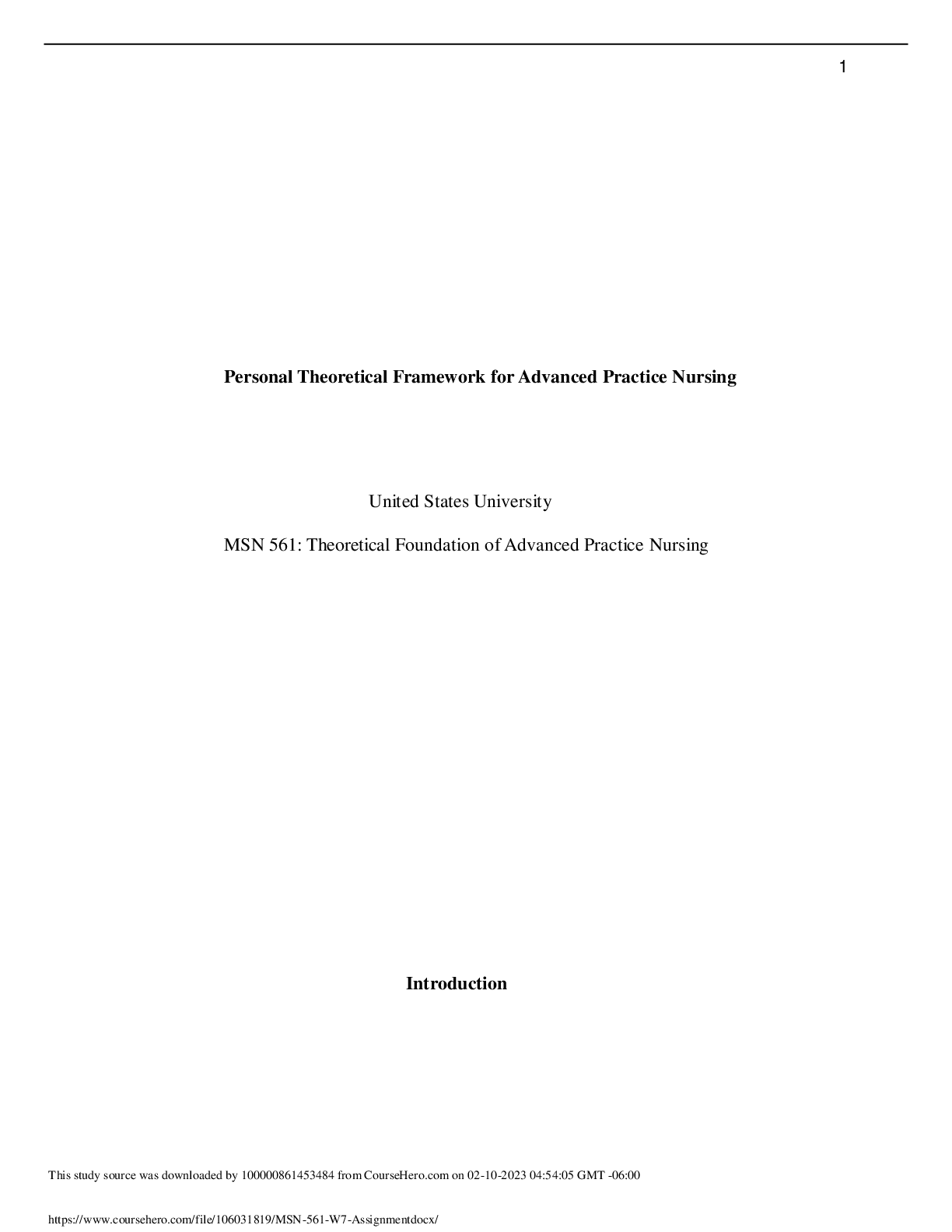
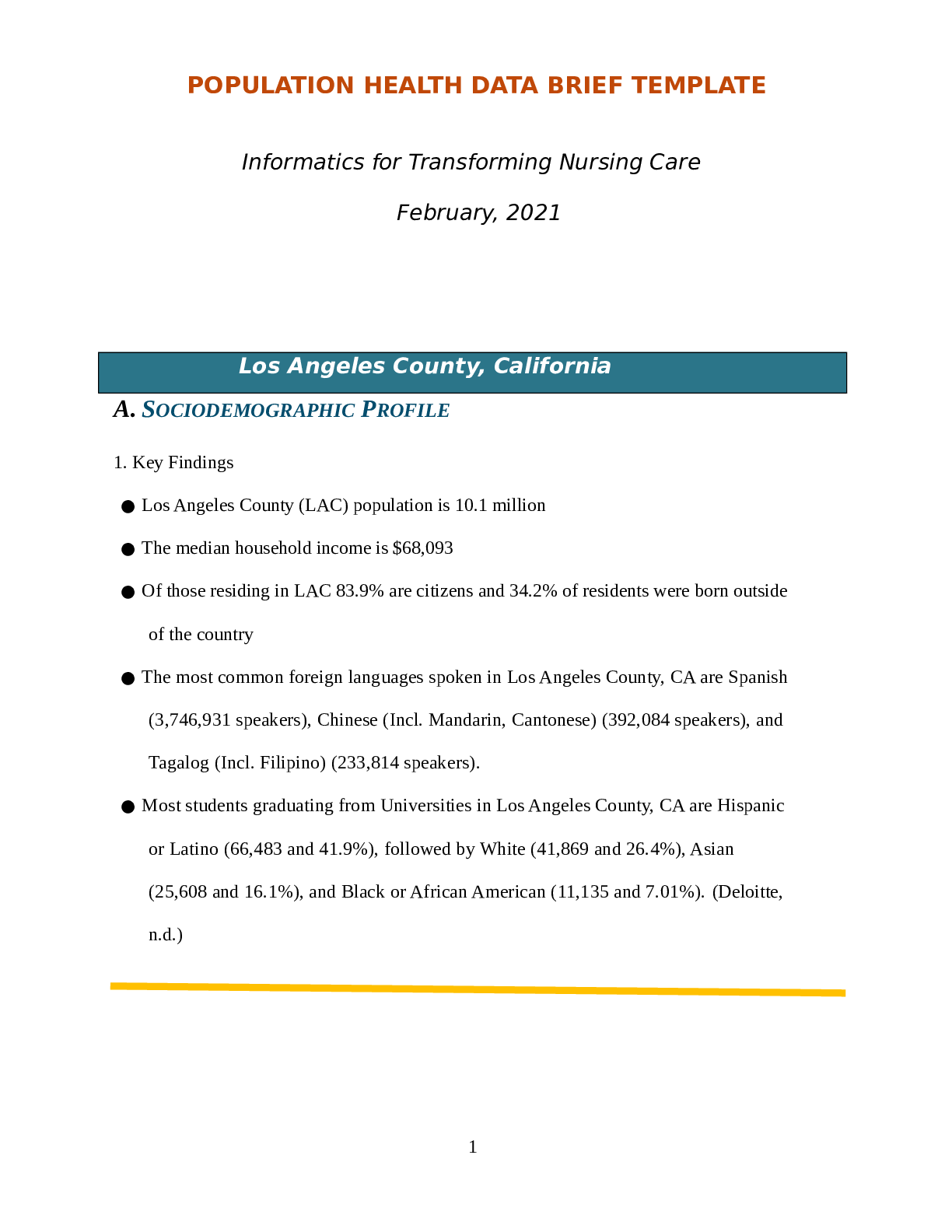

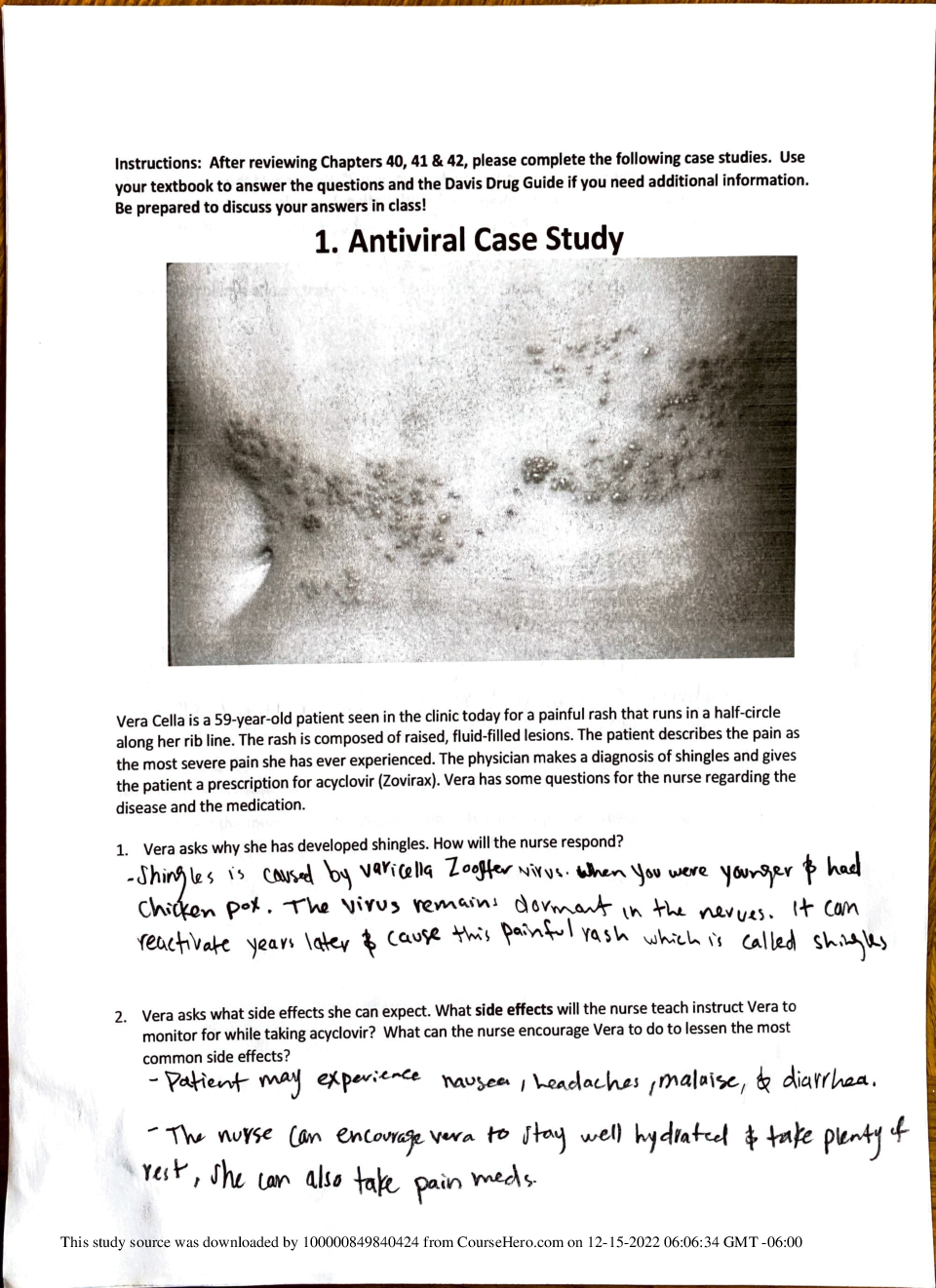


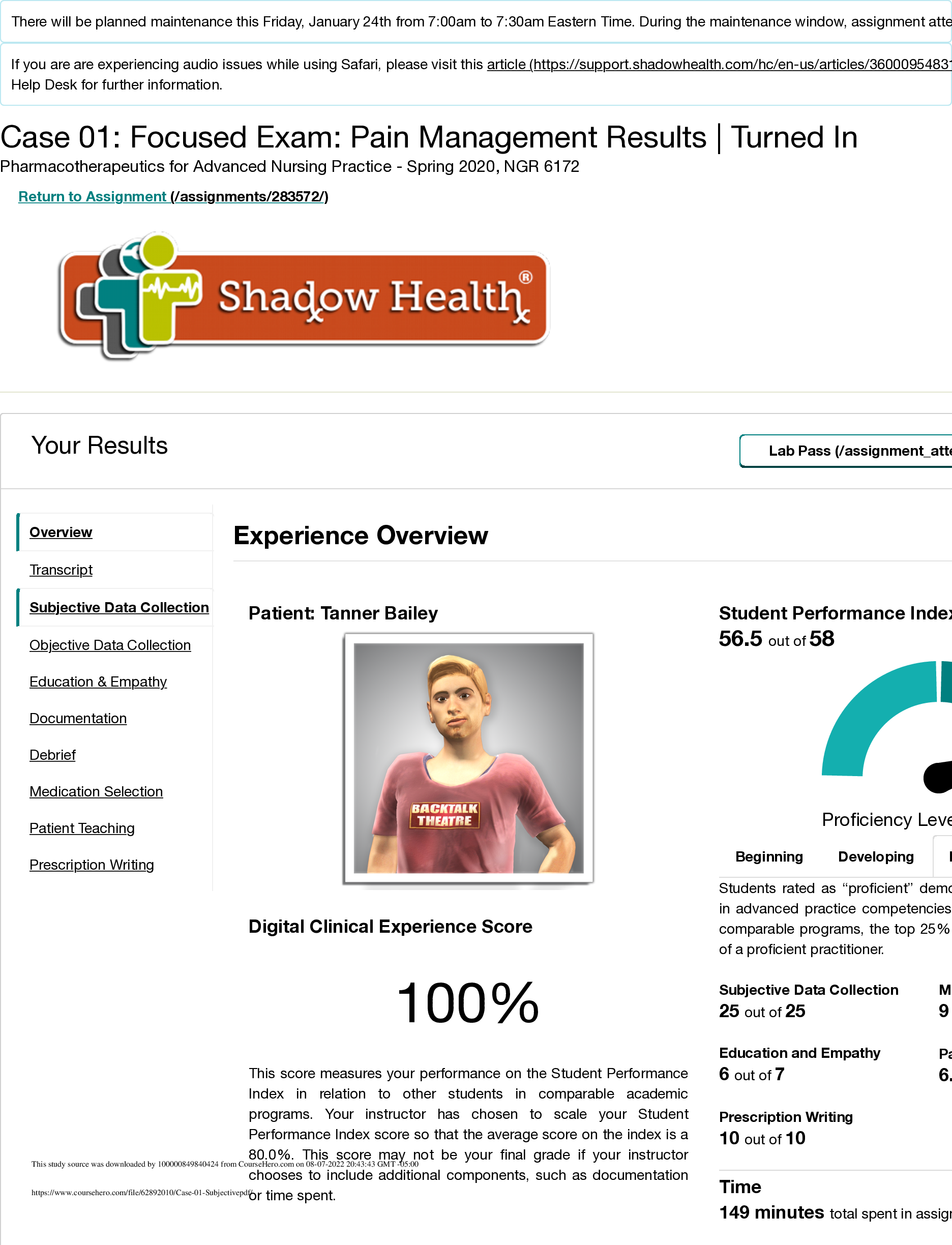


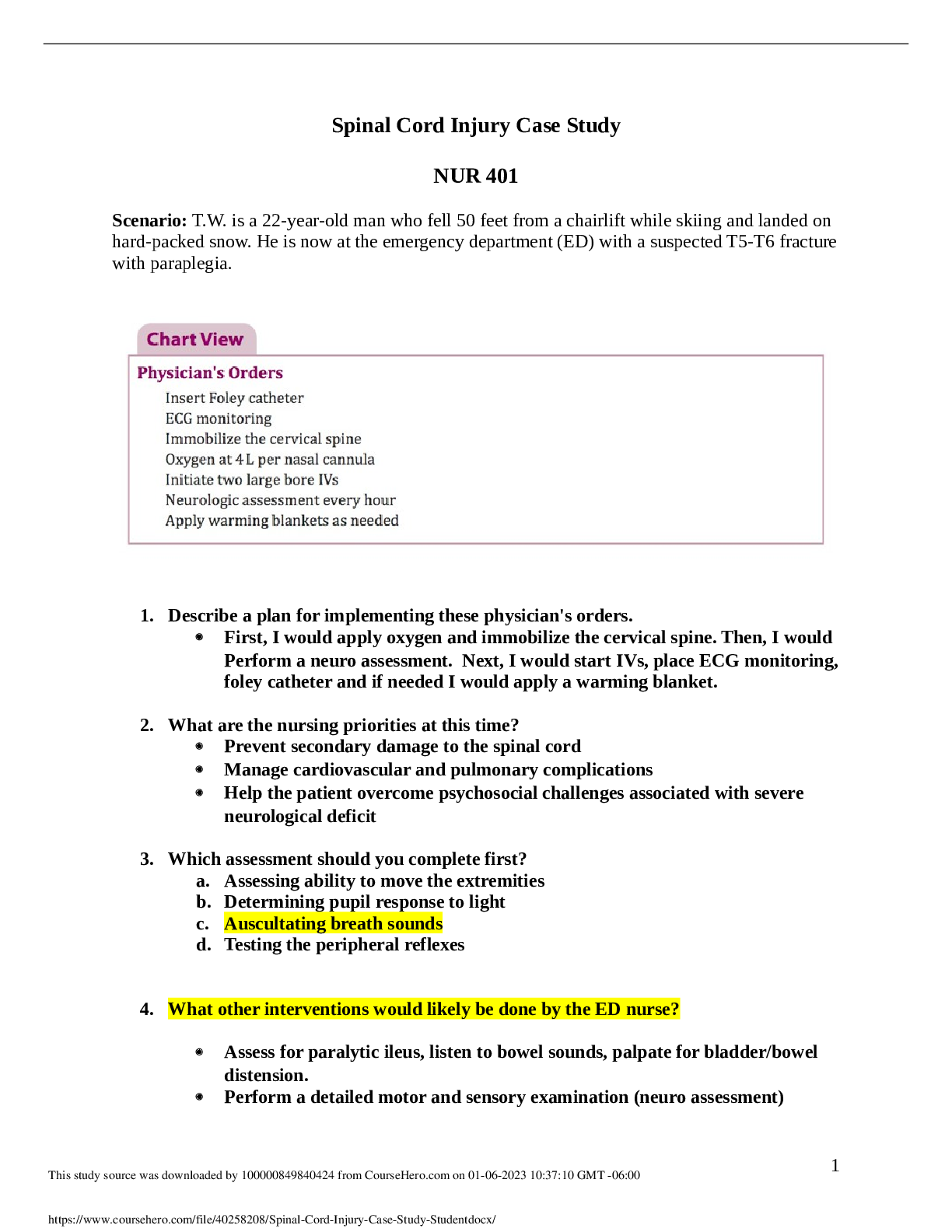
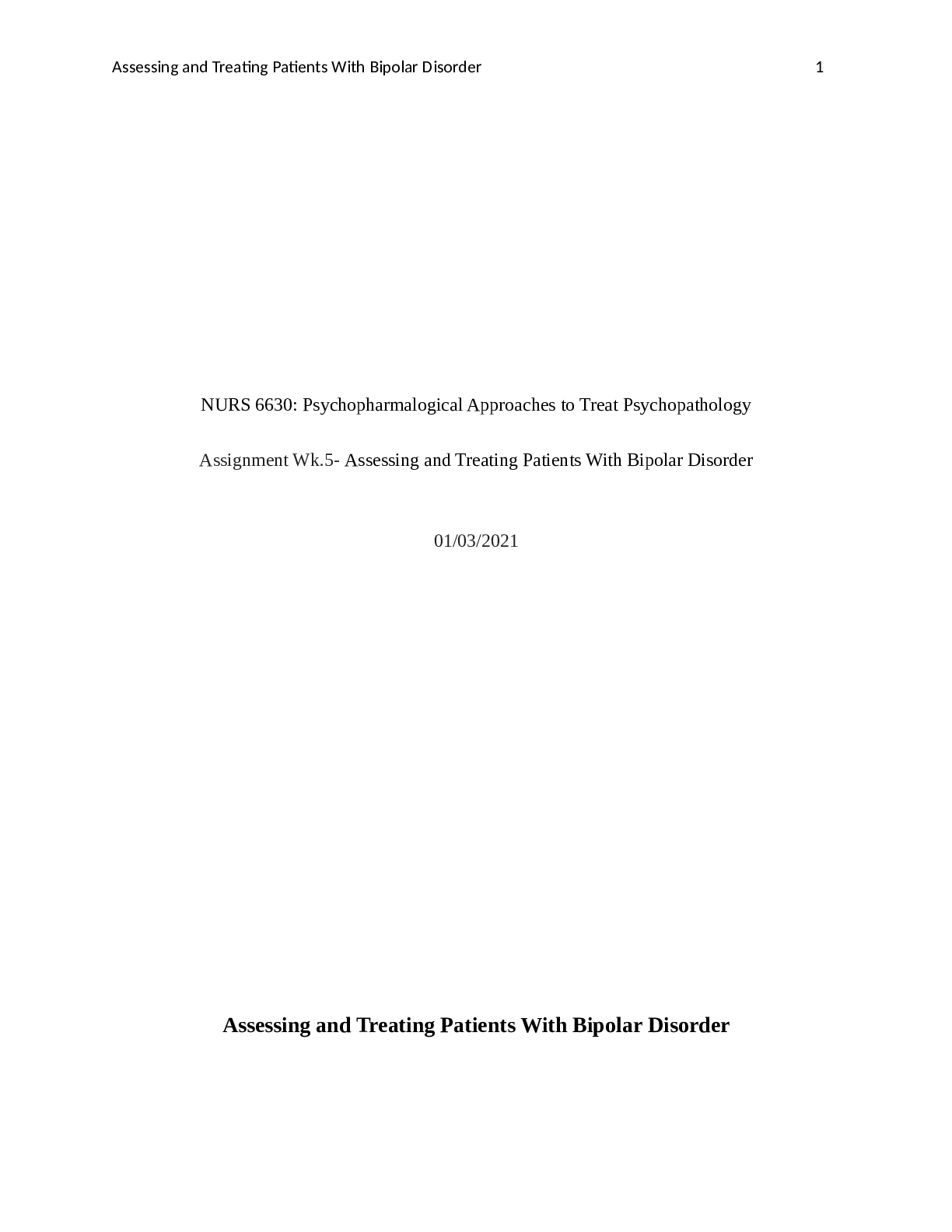



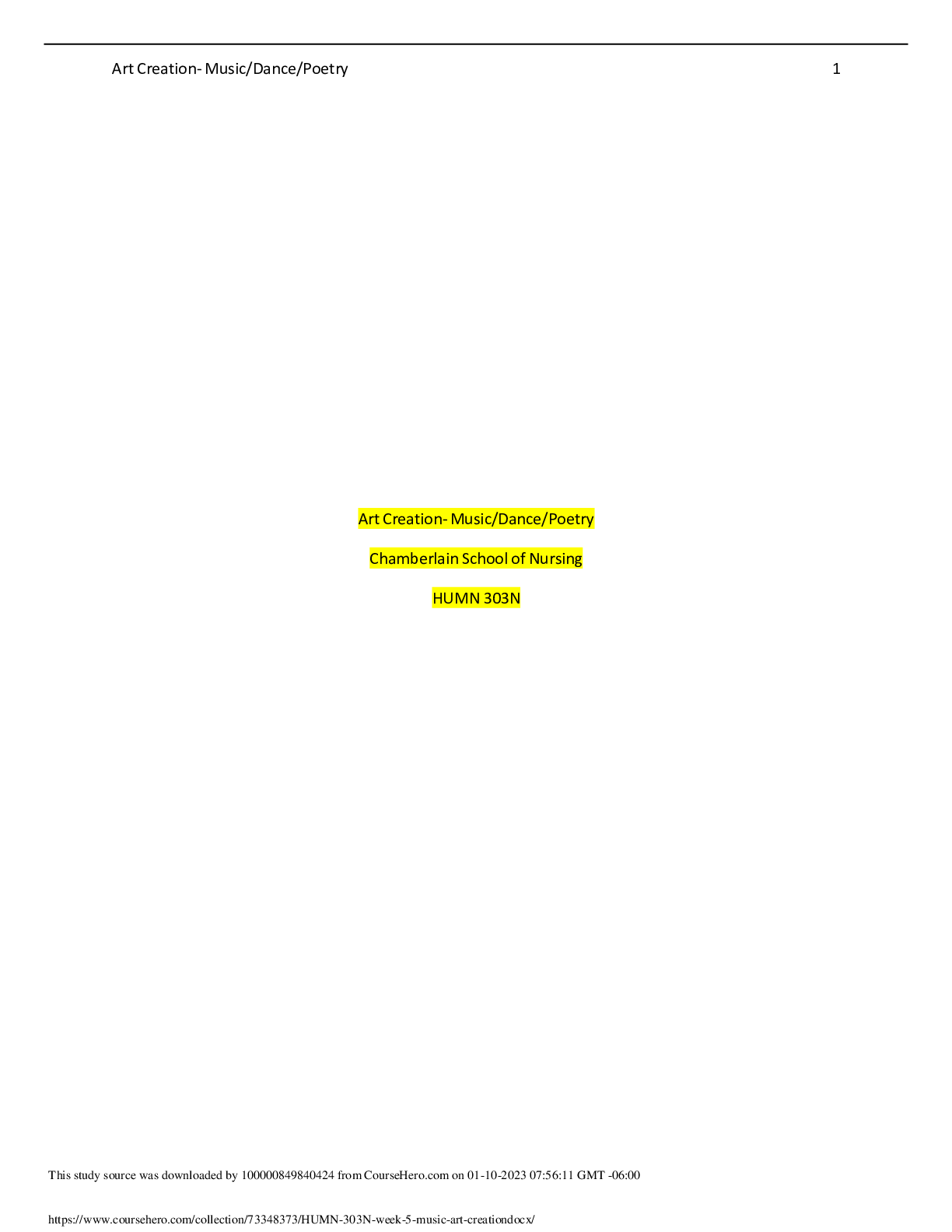
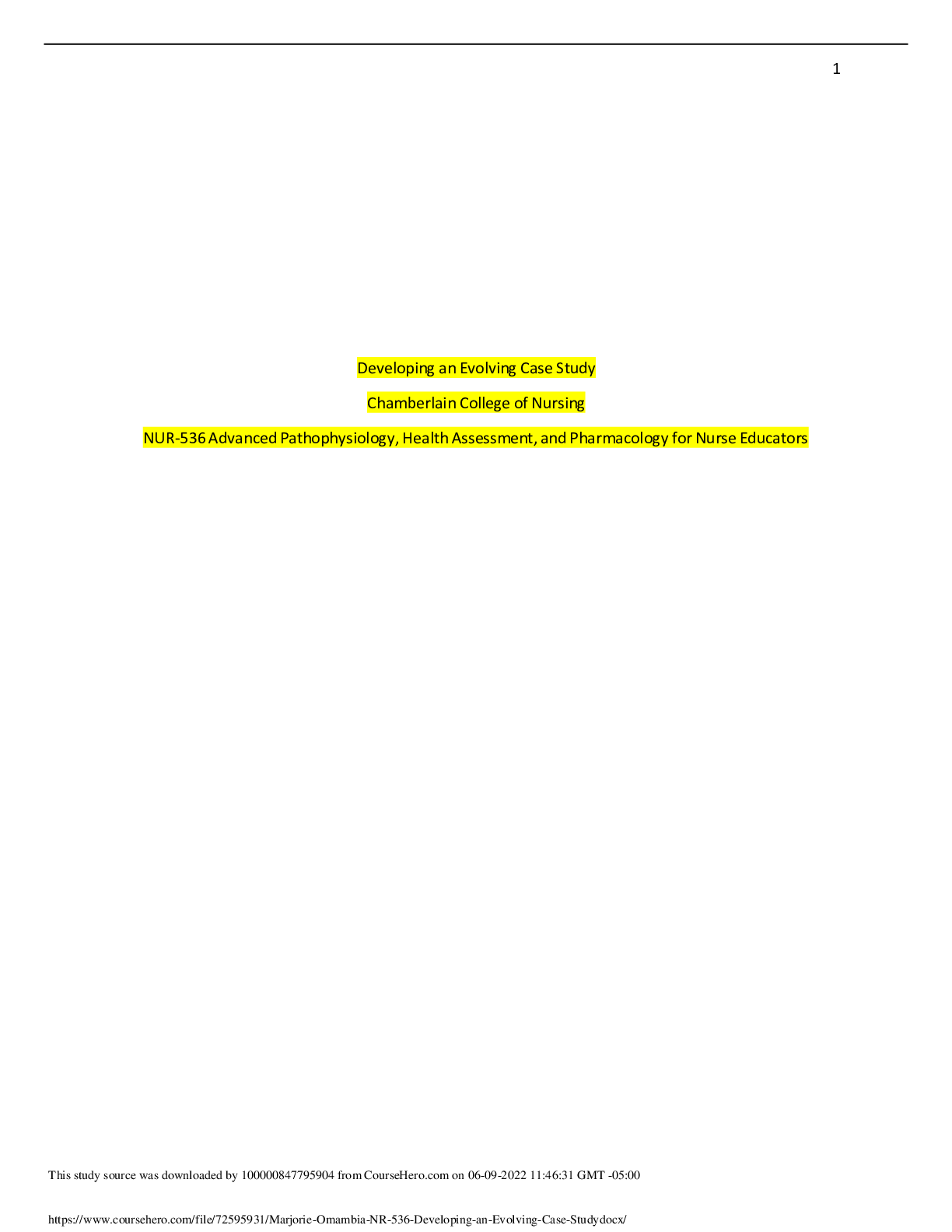
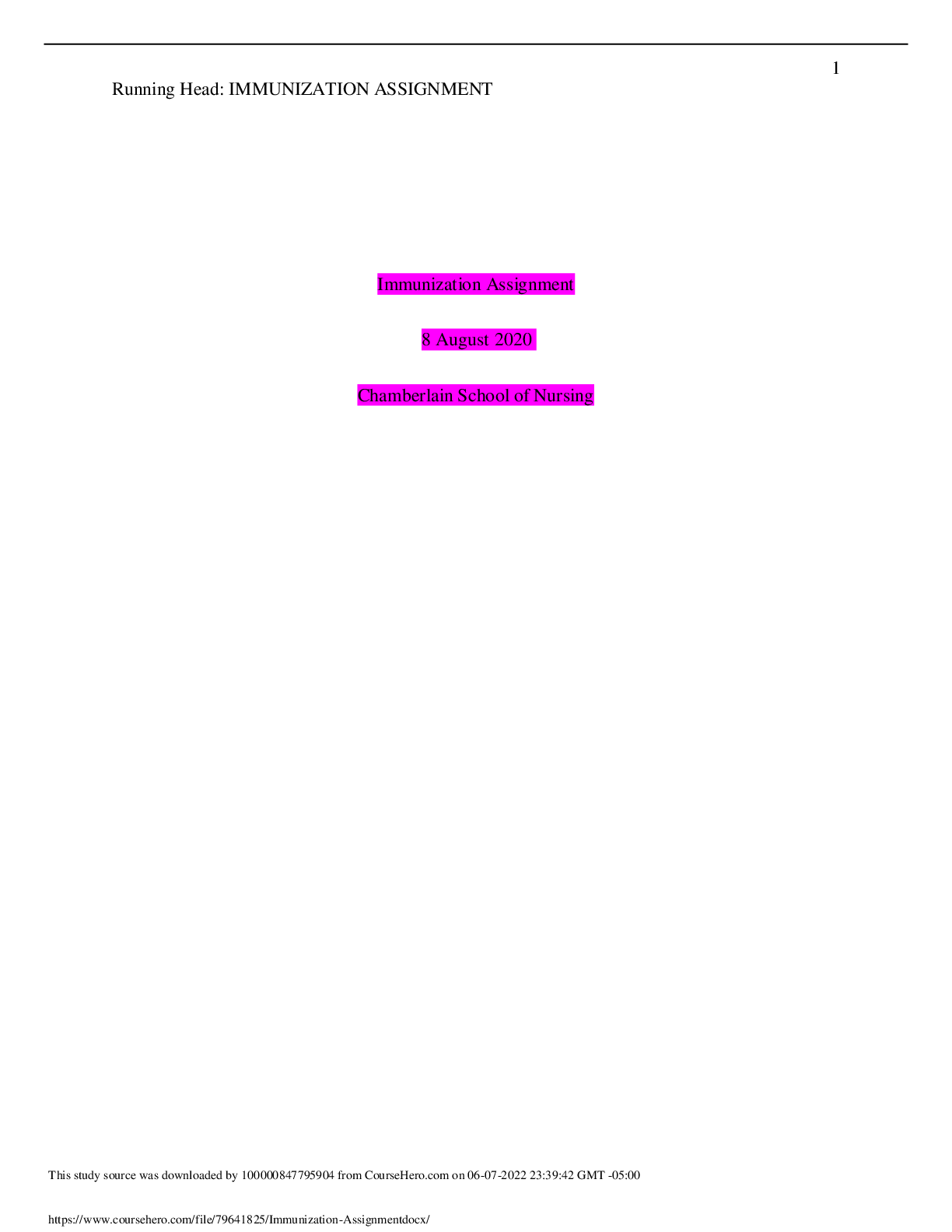
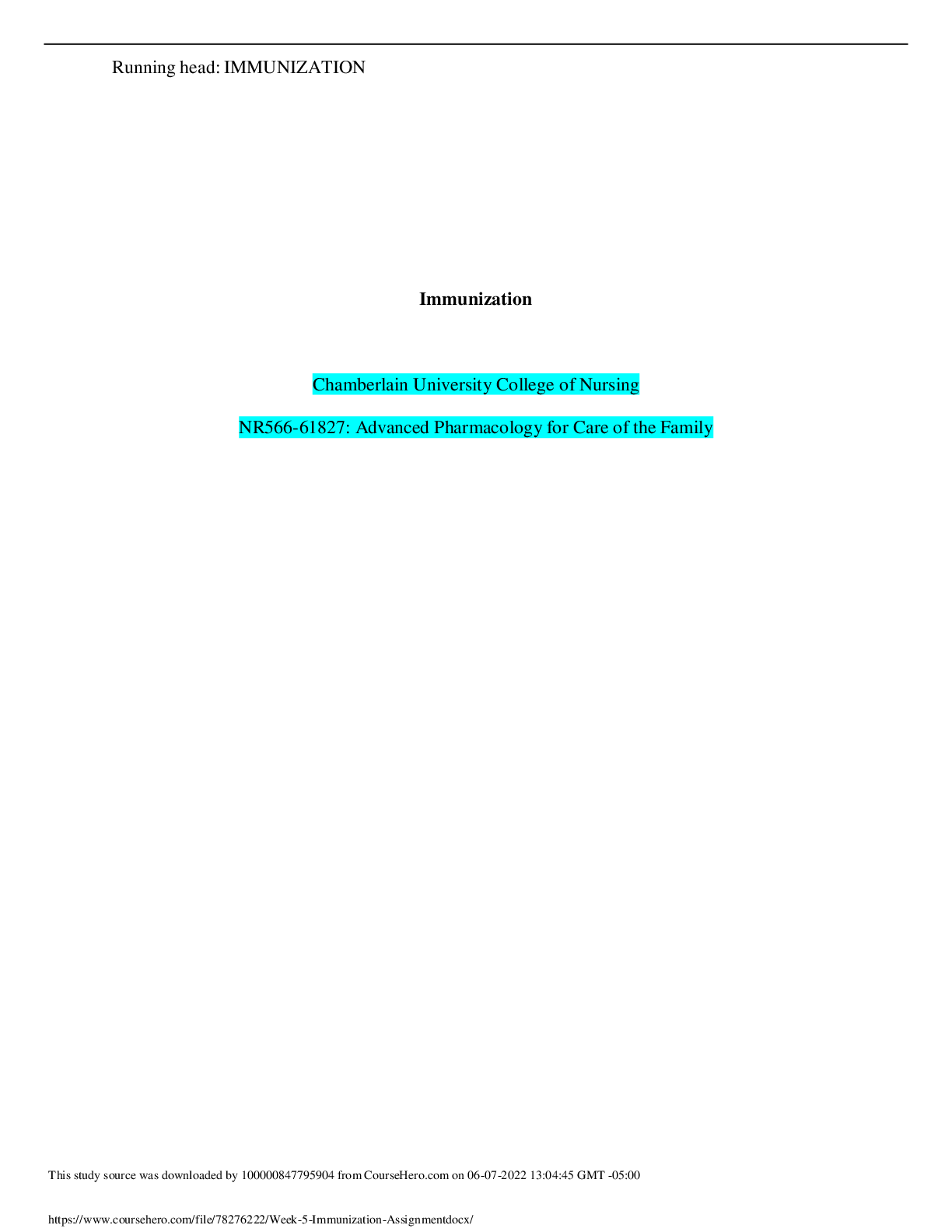

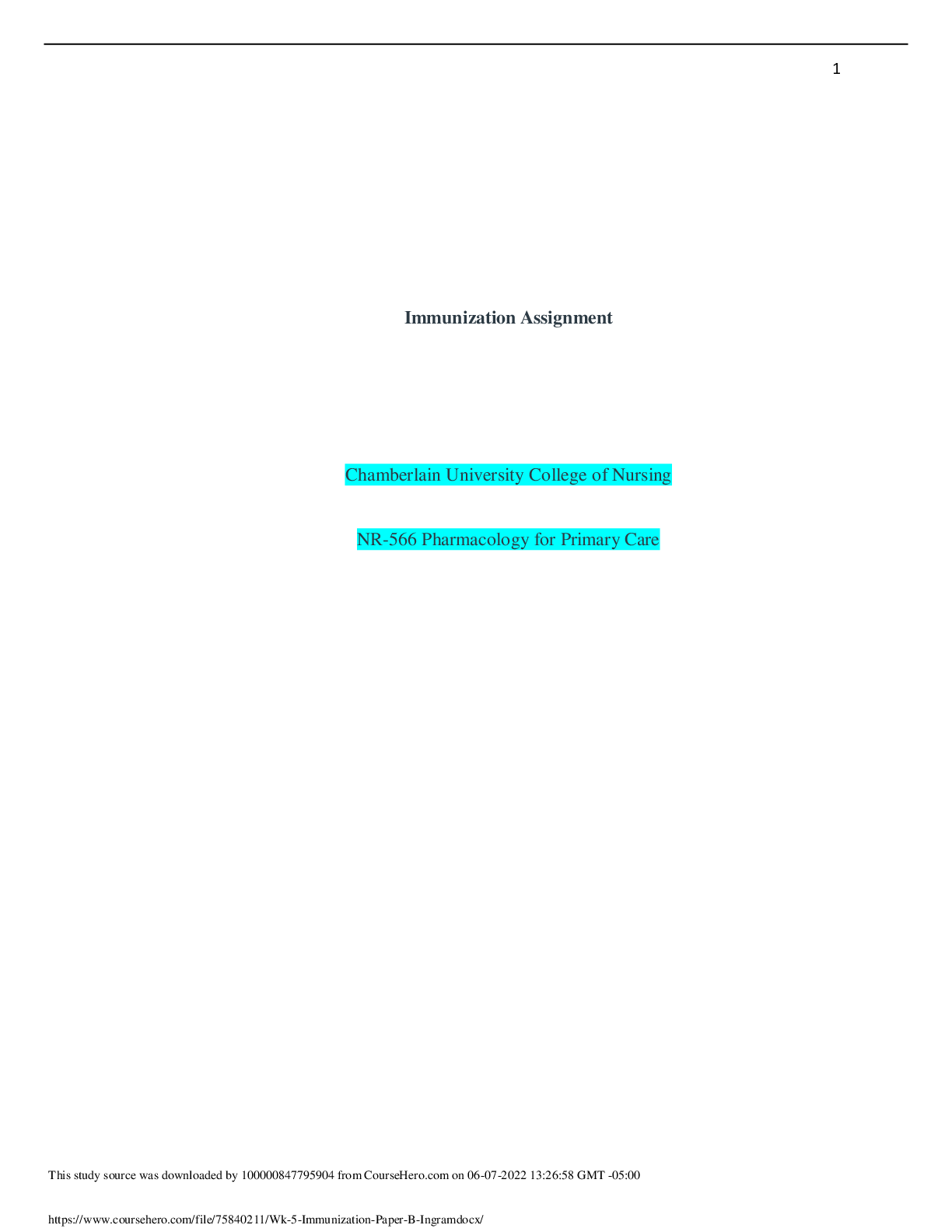


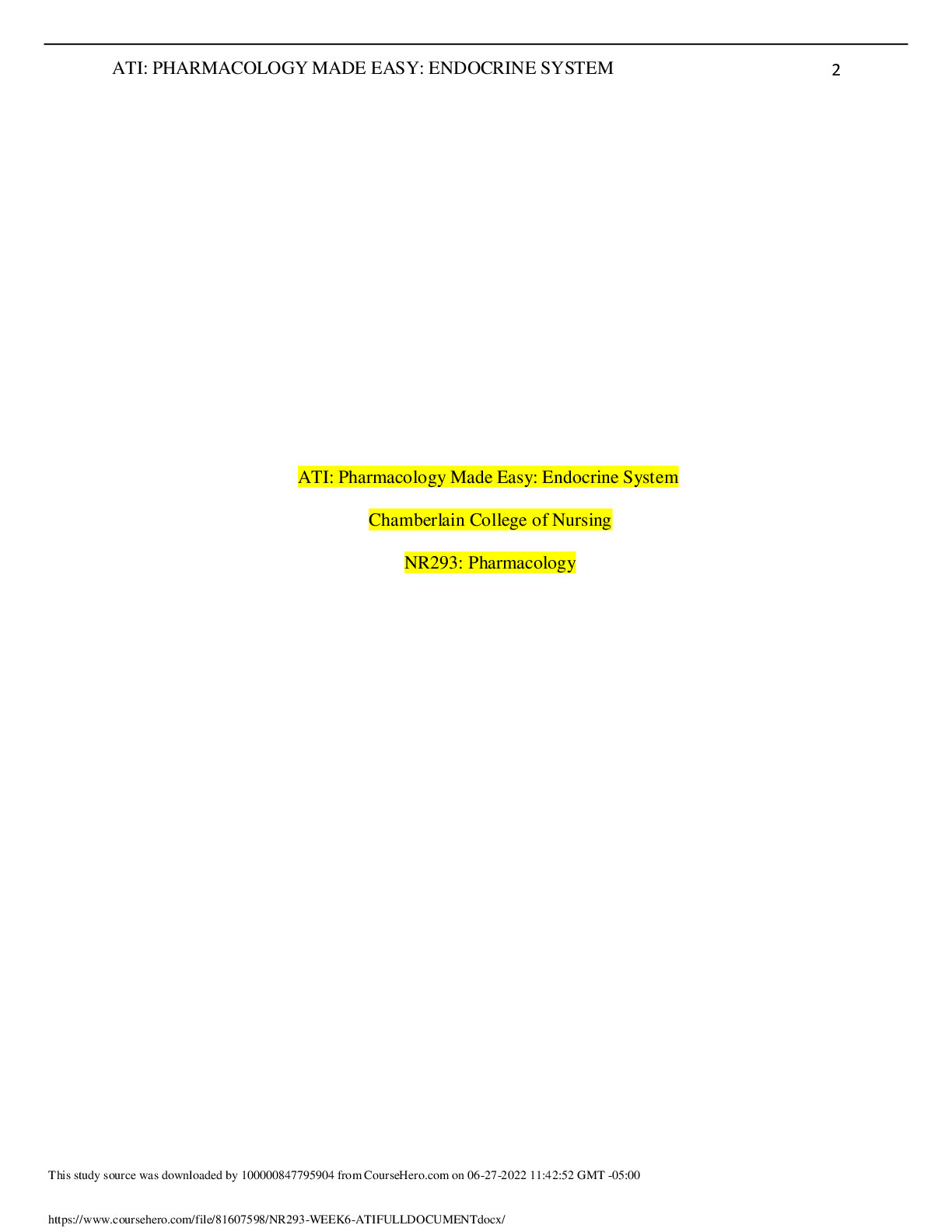
 (1).png)
